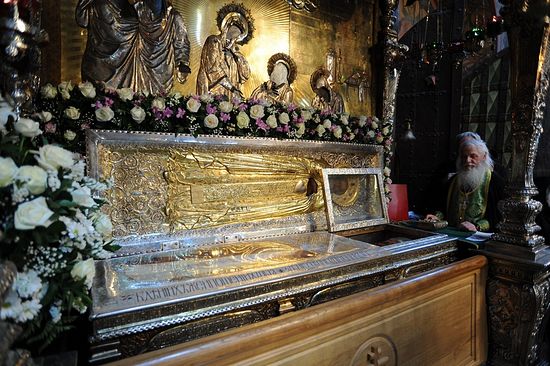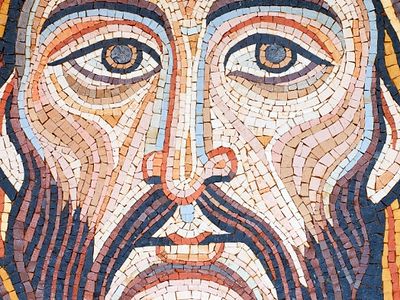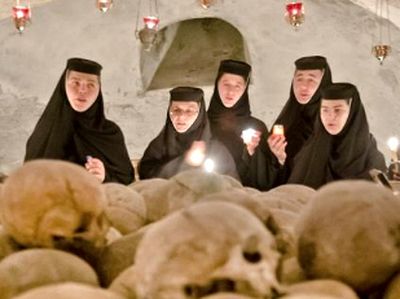The veneration of the relics of the saints is rooted in several Biblical truths, as well as in the Tradition of the Church.
1). Unlike the pagan Greeks, we believe in the goodness of creation. As we are told in Genesis 1:31, when God completed his work of creation:
"And God saw every thing that he had made, and, behold, it was very good."
Consequently, we believe that God can and does use material things to impart grace, as is seen throughout both the Old and New Testaments.
2). God honors those who honor him.
"for them that honor me I will honor, and they that despise me shall be lightly esteemed" (1 Samuel 2:30).
"if any man serve me, him will my Father honor" (John 12:26).
"Wondrous is God in His saints; the God of Israel, He will give power and strength unto His people. Blessed is God" (Psalm 67[68]:35 LXX).
3). God has worked miracles through the relics of the saints in Scripture.
We are told that when the Prophet Elijah was taken up to heaven in fiery chariot, his mantle fell to the Prophet Elisha:
"And he took the mantle of Elijah that fell from him, and smote the waters, and said, Where is the Lord God of Elijah? and when he also had smitten the waters, they parted hither and thither: and Elisha went over" (2 Kings 2:14).
Furthermore, when the Prophet Elisha himself died, he was buried in a cave, but then a man was raised from the dead by touching his relics. After his death, the Moabites invaded, and when some men where burying another man in that area, when they saw the Moabite raiders, "they cast the man into the sepulchre of Elisha: and when the man was let down, and touched the bones of Elisha, he revived, and stood up on his feet." (2 Kings 13:20-21).
And in the New Testament we read that "God wrought special miracles by the hands of Paul: So that from his body were brought unto the sick handkerchiefs or aprons, and the diseases departed from them, and the evil spirits went out of them" (Acts 19:11-12).
Countless examples could be cited from Church history, but let me cite perhaps the earliest example, which is found in the Martyrdom of Polycarp, St. Polycarp was the bishop of Smyrna, ans a disciple of the Apostle John. His martyrdom was written down soon after he was martyred, around the year 160 a.d.. At the end of his martyrdom we not only see an example of the veneration of relics, but also an explanation of the difference between the worship due to God alone, and the veneration we should give to the saints. We are told of how some sought to have the Roman magistrate keep the Christians from retrieving the body of the Holy Martyr
"'lest,' so it was said, 'they should abandon the crucified one and begin to worship this man'—this being done at the instigation and urgent entreaty of the Jews, who also watched when we were about to take it from the fire, not knowing that it will be impossible for us either to forsake at any time the Christ who suffered for the salvation of the whole world of those that are saved—suffered though faultless for sinners—nor to worship any other. For Him, being the Son of God, we adore, but the martyrs as disciples and imitators of the Lord we cherish as they deserve for their matchless affection towards their own King and Teacher.... The centurion therefore, seeing the opposition raised on the part of the Jews, set him in the midst and burnt him after their custom. And so we afterwards took up his bones which are more valuable than precious stones and finer than refined gold, and laid them in a suitable place; where the Lord will permit us to gather ourselves together, as we are able, in gladness and joy, and to celebrate the birth-day [i.e. the anniversary] of his martyrdom for the commemoration of those that have already fought in the contest, and for the training and preparation of those that shall do so hereafter" (The Martyrdom of Polycarp 17:2-3; 18:1-3).






